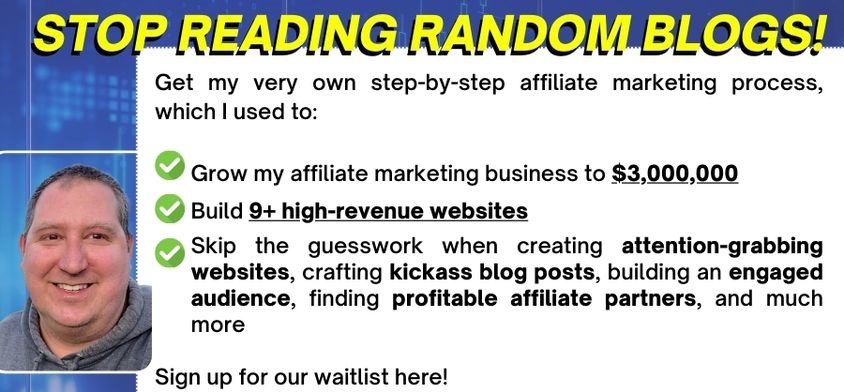CTPM is an acronym of sorts, a way of abbreviating the four steps people can take to make a website profitable. Simply put, it stands for content, traffic, pre-sell, and monetize. The idea is that good content creates the foundation of a site so that the site owner can then focus on driving traffic to that site, getting people interested in it, and selling ads or products to gain revenue.
Within each of the four categories of CTPM are a number of different factors that determine the success of each. For instance, it isn’t enough to just generate content. The content has to be interesting, filled with the right keywords, properly structured, contain appropriate links, and be original. Just following CTPM isn’t enough to build a profitable website. It must be followed religiously, with a near-fanatical devotion to the nuances of each category. Here is a look at each of the CTPM categories so that you can make the process work for you.
Content Is King
Saying that “content is king” is a bit cliché, but it rings as true today as it ever did. In fact, having great content is probably more important now that the web is filled with billions sites all competing for the same traffic than it was in the days when few people were creating webpages. Twenty years ago, even poor content got hits. Now, poor sites with lousy content will drop like stones in search engine ranks.
For content to rank well with search engines, it needs to be original, have strong headlines, and provide answers. The last factor is one that is being taken into account more and more by search engine algorithms. The more specific answers your content provides, the higher it will be ranked. The emphasis on answers comes from the fact that mobile users often search specifically for answers to questions that they want addressed immediately. Because mobile users are the fastest-growing segment of web users, search engines are starting to emphasize their needs. Your site should focus on addressing questions in a succinct way that would appeal to mobile users.
It should come as no surprise that what makes content great for search engine optimization is also what makes content great for readers. After all, the whole point of a search engine is to serve users the most relevant content. That said, there are factors in addition to those listed above that are important for making content great for people. Those factors include making the content actionable (people want to take something useful away from it), making the content accurate (cite sources and keep things current), and making the content entertaining. Build trust among your readers with honest, carefully researched content so that they will post it around the web, share it with friends, and tell others about it.
Traffic
If you have followed the tips above regarding content, then you are already well on your way to owning a high-traffic website. Great content isn’t enough though. You will probably get a lot of your traffic from search engines in general and from Google in particular. You need to make your site attractive to search engine spiders by following the advice in this section. If 80% of your traffic is going to come from Google (it most likely is), then you need to make sure that Google likes your site.
To start, keep your website organized. Follow the 3-tier link strategy and use silo structures to organize your content. A well-organized website is key to making sure that spiders can efficiently traverse content and index it. Keywords should factor heavily into both your silos and your tiers to make your website attractive to search spiders and help boost your PageRank.
Beyond structure, you need to focus on the basics of SEO. Use nofollow links when appropriate, pay attention to your keyword density, use meta tags, and cultivate backlinks. Don’t forget the little things either. Be sure to keep your URLs search-friendly, avoid Flash like the plaque, and leverage your social media for all it’s worth.
Pre-Sell
Pre-selling may seem like a funny way to spend time. After all, wouldn’t it be better to just jump straight to selling? Well, you can’t sell something to someone who doesn’t trust you and pre-selling is all about trust and brand image. You have to think of your website as a brand. You want readers to be comfortable with your brand and pre-selling is about building brand comfort. By giving users content that they can trust, you’ve already started down the path to good brand recognition. If you keep that up, then when you do suggest that a user buy a product, that person won’t write you off without considering what you have to say.
Pre-selling isn’t just about producing trustworthy content. It is also about building trust through connections with other groups and businesses and by letting people know that you are, in fact, trying to make a buck. Connect to brands that have good public images and reference material from well-known and well-trusted sources. Tell people when you are selling them something and tell them why. Even if they don’t buy the first time around, they’ll appreciate the honesty and come to view your site with high regard. Respect will translate into sales and more traffic as people spread the word about your quality and sincerity.
Monetize
Believe it or not, if you’ve done everything well in the first three steps, monetizing your website should be downright simple. You have the content, the rank, the traffic, and the trust, all you really have to do now is sign up for good affiliate programs, get advertisements placed, and make the most of the traffic flowing your way. You also need to monitor your site and tweak it to get the most income from it.
Signing up for good affiliate programs is easier said that done. Look for good programs from reputable companies who have affiliate programs in your niche. You’ll have to a do a lot of research, but the goal is to make sure that the company is actually going to pay you and that it is going to treat the customers that you send its way well.
One of the key aspects to making the most out of your site is to monitor traffic and see where people go and what people do. Look at your conversion rates and determine why people are buying, when they make purchases, and which of your streams of revenue are doing well. Use that information to tweak your site. Data is your friend, so use everything you have access to.
Go Big or Go Home
Many people who come to the Internet to make money don’t have the patience or dedication to see the process through. There is nothing easy about generating traffic and driving it to your website and then converting that traffic into sales. If you are coming into this thinking it will be easy, you will be disappointed. If, however, you are coming into this thinking that the hard work you invest will pay off in the end, then you’re on track to success. Plan to follow through on your Internet business or just walk away now and save yourself a lot of time. It’s going to take patience, more than anything else.


